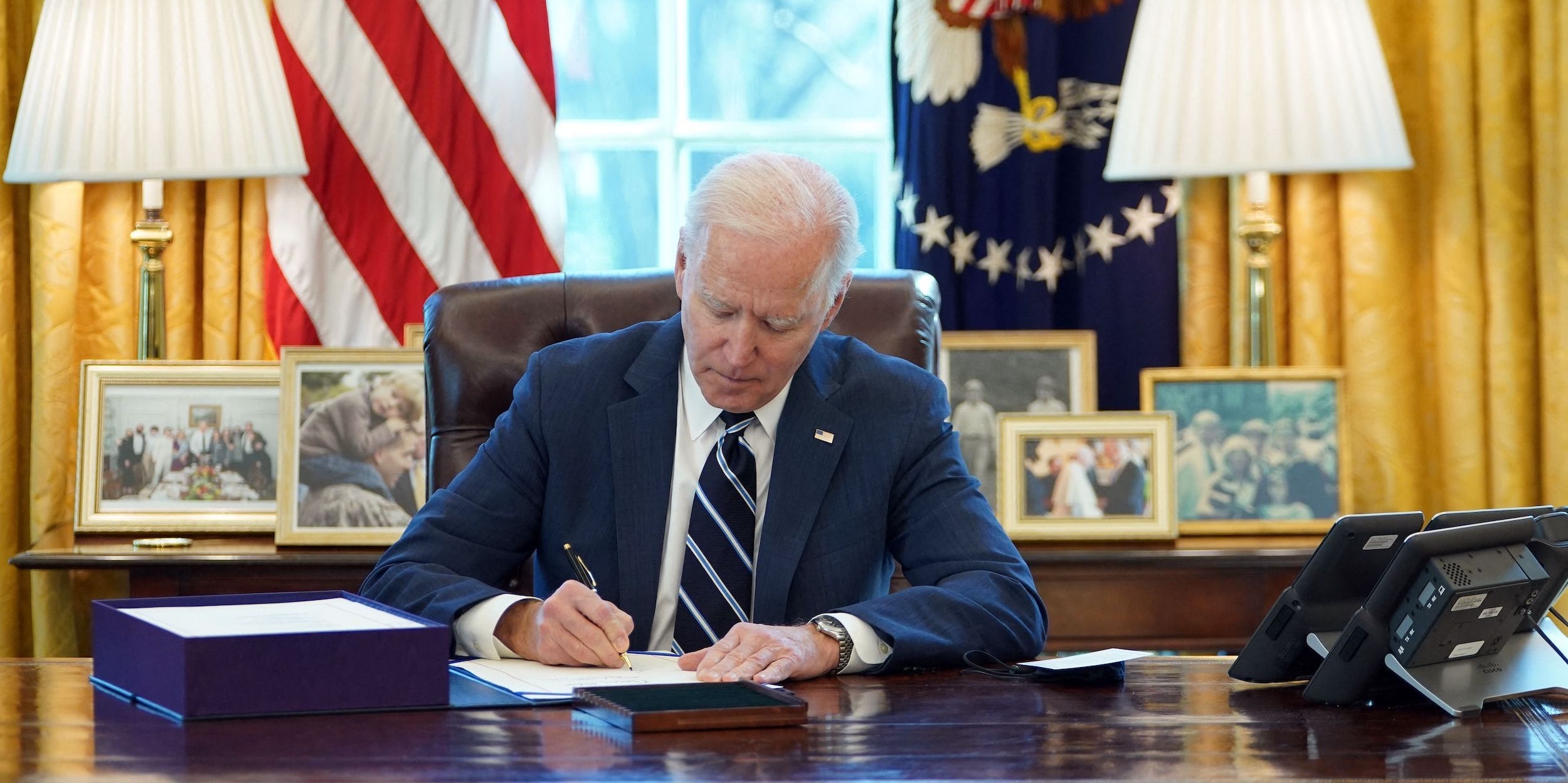
Mandel Ngan/AFP/Getty Images
- Goldman Sachs lifted its 2021 US growth forecast to 8% from 7.7%, citing new stimulus for the boost.
- The bank also expects Biden and Democrats to pass at least $2 trillion in infrastructure spending.
- That sum could hit $4 trillion if the deal includes education, child-care, and health-care spending.
- See more stories on Insider's business page.
Goldman Sachs joined its Wall Street peers in revising its US economic outlook on Saturday, pegging an increasingly bullish forecast to Democrats' latest stimulus package.
The team led by Jan Hatzius now expects US gross domestic product to grow 8% in 2021 on a fourth-quarter-to-fourth-quarter basis, according to a note published Saturday. That's up from the previous estimate of 7.7%. The bank's full-year growth estimate climbed to 7% from 6.9%.
The current-year projection largely hinges on President Joe Biden's stimulus plan, as Goldman had initially expected a $1.5 trillion deal to reach Biden's desk. The $1.9 trillion plan signed by the president on Thursday will accelerate the nation's economic recovery through the middle of 2021 before tapering off into 2022, the bank's economists said. Stimulus checks' rollout over the coming months will concentrate the plan's positive impact in the second quarter, they added.
Democrats' stimulus package is probably the last major pandemic-era relief deal, but key tenets of the plan are set to be renewed as the economy climbs out of its virus-induced hole. The bill's expansion of the child tax credit will probably be extended or made permanent by Democrats, according to Goldman.
The $300 supplement to federal unemployment benefits will expire as planned in September, but expanded eligibility and benefit duration policies included in Biden's package could be prolonged, the team said.
Next stop: Infrastructure
Biden has said he aims to pass a massive infrastructure measure to further juice the US recovery. Such a plan will come with a price tag of at least $2 trillion, though details are scarce for now, Goldman said.Inclusion of funding for child care, health care, or education could push the sum to $4 trillion, though tax hikes would probably be needed to fund such a package, the bank added.
Biden campaigned on a $2 trillion package, though some Democratic senators indicate they favor even larger spending. Sen. Joe Manchin of West Virginia, an influential moderate member of the caucus, has said he could support up to $4 trillion, while Sen. Dick Durbin of Illinois, a member of party leadership, has said he could support $3 trillion.
Infrastructure spending would have a less pronounced impact on growth, but Goldman still sees the package driving a stronger expansion through 2022. The economy will expand 2.9% next year on a Q4-Q4 basis, up from the bank's prior forecast of 2.4%.
House Democrats began planning their infrastructure push on Friday. House Speaker Nancy Pelosi said she hopes to hold bipartisan talks on improvements to broadband, energy, and education, among other sectors. Yet after passing the stimulus bill without a single Republican vote, garnering support across the aisle could be difficult.
Goldman's update follows similarly optimistic changes elsewhere on Wall Street. Morgan Stanley lifted its forecast on Tuesday to 8.1% on a Q4-Q4 basis. US GDP will fully rebound to pre-pandemic highs by the end of the first quarter and trend higher in the coming months as the economy fully reopens, the team led by Ellen Zentner said.
Separately, UBS projected growth would reach 7.9% from Q4 2002 to Q4 2021 as stimulus, falling COVID-19 case counts, and continued vaccination opened the door for a strong recovery. The bank, like Goldman, had expected Republicans to water down the size of the latest relief package. Passage of the full bill can help consumer spending lift the ailing services industry into 2022, economists led by Seth Carpenter said in a note to clients.
